Scientific Information/Data
Histamine is a bioactive or “vasoactive” amine produced in the body in response to an injury or foreign substance. It has an array of physiological effects, including increasing blood supply to specific sites in the body. In addition, histamine is involved in the immune response, regulation of gastric acid, permeability of blood vessels, contraction of muscles, and the normal response to inflammation.[1] The highest concentrations of histamine in the body are found in the gastrointestinal tract, lungs, and skin, with lesser amounts in the brain and heart.* Histamine is not only produced in the body but is also present in many fermented foods, such as sauerkraut, sausage, cheese, yogurt, and alcoholic beverages. Tuna, olives, spinach, eggplant, avocados, tomatoes, cherries, and citrus fruits are other histamine-containing foods. Despite their absence of histamine, some foods, such as berries, tea, and a variety of spices, stimulate the endogenous production of the amine due to their benzoate content. In addition, microbial fermentation can convert the histidine in high-protein foods to histamine so that the histamine content of food can increase over time.*[1]
Histamine/DAO balance Endogenous and exogenous histamine must be broken down in order to maintain homeostasis and histamine
balance. The enzyme diamine oxidase (DAO) degrades histamine by converting it from 2-(4-imidazolyl)-ethylamine to the inactive metabolite imidazole acetaldehyde.[2] The active ingredient in HistDAO is porcine-derived diamine oxidase, and research suggests that DAO derived from porcine kidney appears to have identical action to DAO derived from porcine intestine.[3] In humans and other mammals, DAO is found in high concentrations in the gastrointestinal mucosa. Animal studies suggest that circulating DAO may be a marker for mucosal integrity and maturity.[4] Certain drugs may affect histamine balance in the body by promoting histamine release or inhibiting DAO.*[2]
Histamine Tolerance Histamine tolerance may not be the same for everyone. Results of a double-blind, placebo-controlled crossover
study suggest that tolerance to histamine can vary from individual to individual.[5] Total body histamine load must be considered when
evaluating histamine tolerance, and a balance between histamine and DAO appears to be crucial to maintaining skin, rhinoconjunctival,
and gastrointestinal health.[2,6] Genetic and environmental factors may interact to influence DAO expression. Ongoing research addresses
the role that genetic variations may play in individual differences in DAO metabolism, and serum activity was significantly associated with
seven single nucleotide variations within the DAO gene.[7,8] Histamine tolerance may be reflected in detailed questionnaires, food intake
logs, trial with low-histamine diet, and measurement of DAO and histamine.*[9,10]
Histamine tolerance and its manifestation may vary from organ to organ as well. A study of 39 patients suggested that intake of DAO produced a statistically significant reduction in symptoms associated with exogenous histamine ingestion, although single symptoms were not found to be reproducible.*[11]
Ultimately, diminished serum DAO levels appear to be associated with changes in histamine degradation and serum histamine levels.[10]
Although the mechanism of histamine degradation is uniform throughout the body, HistDAO only addresses excess exogenous histamine found in the folds, villi, and microvilli of the small intestine. HistDAO is not absorbed and therefore does not have systemic activity. A two-capsule dose of HistDAO contains 20 mg of vitamin C and 20,000 HDU (histamine degrading units) from diamine oxidase. HistDAO is NOT EFFECTIVE for symptoms of immune-related food allergies, such as peanuts, shellfish, etc.*
*These statements have not been evaluated by the Food and Drug Administration. This product is not intended to diagnose, treat, cure, or prevent any disease.
References
1. Histamine Intolerance. http://www.allergynutrition.com/faq.php. Accessed April 19, 2012.
2. Maintz L, Novak N. Histamine and histamine intolerance. Am J Clin Nutr2007;85:1185-1196. [PMID: 17490952]
3. Schwelberger HG, Bodner E. Purification and characterization of diamineoxidase from porcine kidney and intestine. Biochim Biophys Acta. 1997 Jun20;1340(1):152-64. [PMID: 9217025]
4. Luk GD, Bayless TM, Baylin SB. Diamine oxidase (histaminase). A circulatingmarker for rat intestinal mucosal maturation and integrity. J Clin Invest. 1980 Jul;66(1):66-70. [PMID: 6772669]
5. Wöhrl S, Hemmer W, Focke M, et al. Histamine intolerance-like symptoms in healthy volunteers after oral provocation with liquid histamine. Allergy Asthma Proc. 2004 Sep-Oct;25(5):305-11. [PMID: 15603203]
6. Kuefner M, Schwelberger HG, Weidenhiller M, et al. Both catabolic pathwaysof histamine via histamine-N-methyltransferase and diamine oxidase are diminished in the colonic mucosa of patients with food allergy. Inflamm Res 2004 Mar;53 Suppl 1:S31-2. [PMID: 15054605]
7. Igaz P, Fitzimons CP, Szalai C, et al. Histamine genomics in silico: polymorphisms of the human genes involved in the synthesis, action and
degradation of histamine. Am J Pharmacogenomics. 2002;2(1):67-72. [PMID:12083955]
8. Maintz L, Yu CF, Rodríguez E, et al. Association of single nucleotide polymorphisms in the diamine oxidase gene with diamine oxidase serum
activities. Allergy. 2011 Jul;66(7):893-902. [PMID: 21488903]
9. Vickerstaff Joneja JM, Carmona-Silva C. Outcome of a histamine-restricted diet based on chart audit. Journal of Nutritional & Environmental Medicine. 2001. 2001;11:249-62. doi:10.1080/1359084012010309.
10. Maintz L, Benfadal S, Allam JP, et al. Evidence for a reduced histamine degradation capacity in a subgroup of patients with atopic eczema. J Allergy Clin Immunol. 2006 May;117(5):1106-12. [PMID: 16675339]
11. Komericki P, Klein G, Reider N, et al. Histamine intolerance: lack of reproducibility of single symptoms by oral provocation with histamine: a
randomised, double-blind, placebo-controlled cross-over study. Wien Klin Wochenschr. 2011 Jan;123(1-2):15-20. [PMID: 21165702]


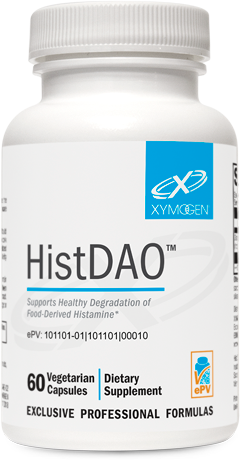
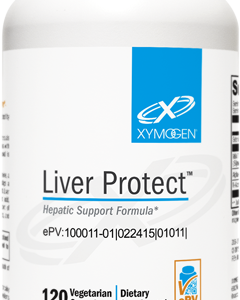
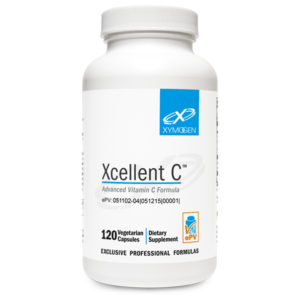
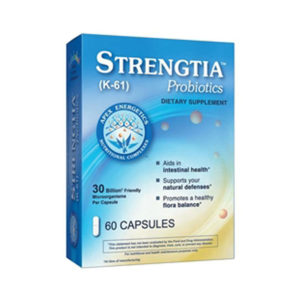
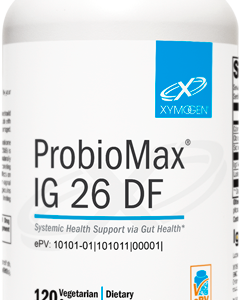
Reviews
There are no reviews yet.